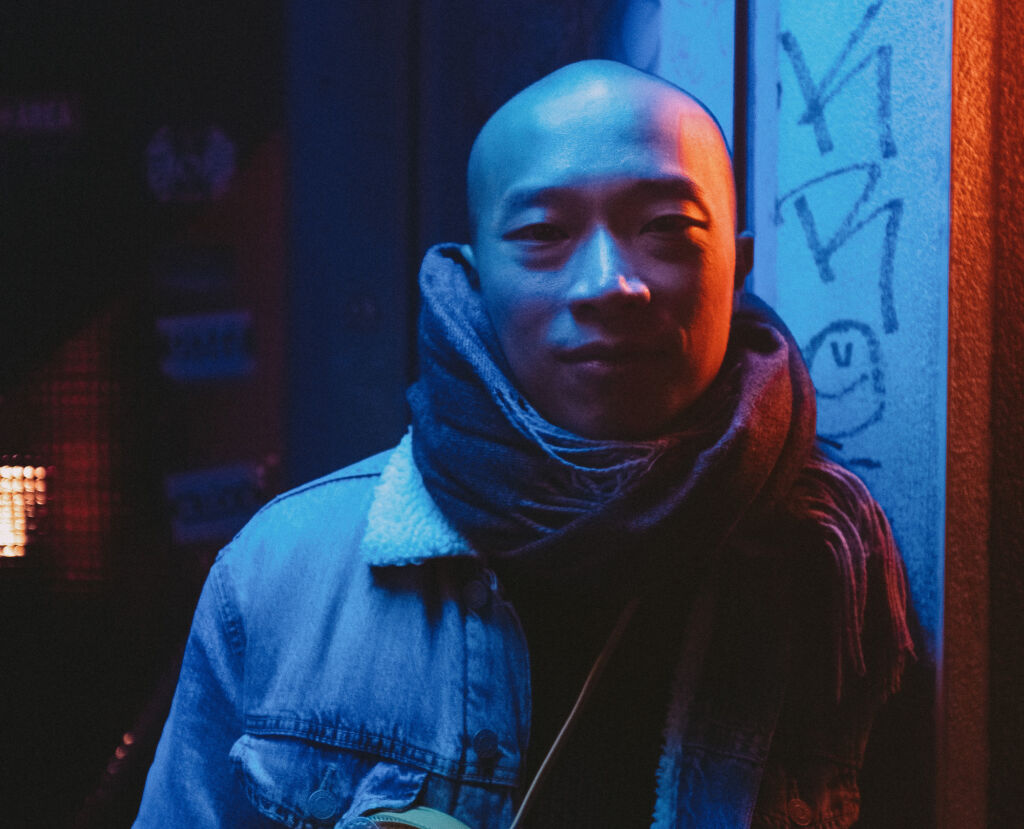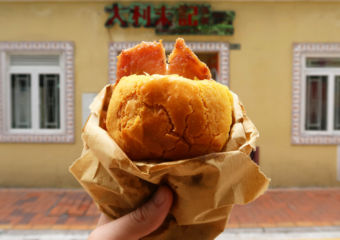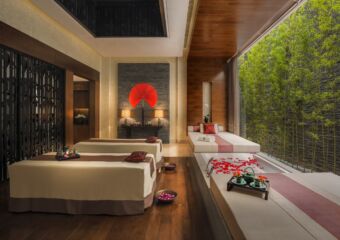Photos credits: Guillaume Galante
Born and raised in Macau, Cheong Kin Man is interested in many things, especially the power of languages and how they are a tool to understand cultures. Active in Macau historical research since a young age, Cheong studied at the University of Macau and is now a Ph.D. student of Visual Anthropology at the Freie Universität Berlin. Intending to live between Macau and Germany, the “story listener” has been paving his way into making documentaries and writing about all sorts of subjects, namely the Macanese community, which the documentary “Ou Mun Ian, Macaenses” (2009) revolves around.
A quick search for your name lets us know you are also known as the “Story Listener”. Can you tell us where did this nickname come from and why?
That was what I tried to find, new labeling for me when I was promoting my experimental visual ethnography “A Useless Fiction” worldwide some four or five years ago. I had this idea of “story listener” when Hélder Beja kindly invited me to the Macau Literary Festival in 2016. Back then I refused to call myself a filmmaker in front of the press, nor did I find “visual anthropologist” or “storyteller” as labels I would like.
At the time–or maybe even now–I find “story listener” somewhat much more interesting. Lately, I have been listening to a lot of fairy-tale broadcasting produced under the already collapsed East German regime. I am obsessed with German fairy-tale books. I love to talk too much, which somehow prevents me from listening. As we say in Cantonese, it is easy to change a dynasty but hard to change one’s character. I have been learning different languages over the years and it helped me a lot to cultivate the habit of only listening.
You graduated in Portuguese Studies from the University of Macau and then in Visual Anthropology in Berlin. What are some of the most important things these studies taught you?
Professionally, I became a government Chinese-Cantonese-Portuguese translator and interpreter after my studies at the University of Macau for a short while. But what these studies most influenced me with was the concentration to learn a language. Today, my only belief that has survived intellectually along all these years is language. I do not believe in ideas, but rather in a language where ideas are formulated and expressed. Or better say I do not believe in the eternal validity of an idea, while language is somehow something valid for a longer time.
What does Visual Anthropology entail, exactly?
I might be the wrong person to tell you about this. Personally, I understand visual anthropology as anthropology made with visual methods or means, which is born to be with a colonial sin and an enlarging critical self-reflection at the same time. The most difficult thing for me is to find a balance between affection and emotion between these two sides, exactly like between the evil and good sides of whatever else.
During my two-year MA (Master’s) studies in visual and media anthropology at the Freie Universität Berlin, I got the impression that I and some of my classmates were trained to be so critical to the point that we became fervent advocators of any kind of intellectual decolonization. There are a lot of movements of feminism, anti-racism, and decolonization going on in Berlin. So I think it did make sense that I was almost a “religious” believer in the European mainstream thinking of cultural decolonization.
This even led to the point that I fantasized an “anti-anthropology,” which is nothing special when we look at some anti-philosophy in philosophy. As anthropology carries a heavy colonial past, being evolved in it was something aggressive for me as someone from Macau, especially in the Berlin context. However, after being in exile from anthropology for some time, I have been able to adjust myself: anthropology is just one of many ways to understand this world, echoing what Claude Lévi-Strauss said in 1984.
So visual anthropology, a relatively recent sub-discipline, was born in the vast decolonization movements in the 60s. It has been tackling many kinds of asymmetric relations including cultural colonization or social inequality and this sub-discipline has been very critical towards itself, too. I had the honor to be one of the students of French visual anthropologist Nadine Wanono, a friend and herself a student of Jean Rouch (1917-2004), considered the founder of visual anthropology. Nadine had also inspired me to free myself from academic literature, a very important inspiration for “A Useless Fiction” that lasts until today.
Throughout my MA studies, we had a lot of freedom in terms of creativity. So somehow, when we look at visual anthropology itself tackling asymmetries, it is frustrating and ironic to acknowledge the fact that most parts of academia do not appreciate experimental films, at least in my personal experience and to my knowledge.
Amongst many other things, you are a storyteller in the form of films and documentaries. How did you get interested in this?
Oh, this is a long story! I made my very first short documentary about the Moorish Barracks with the Educational Television in 2005, which was based on a book that I co-wrote and co-published in the same year. Also in that same year, I filmed an interview of Ma Man-kei (1919-2014)–an important Macau tycoon–as a cameraman. I was 18 years old at the time but I never aspired to be a filmmaker.
In my twenties, I became an angry adult from an angry teenager. As Cantonese-speaking Macau people, we grew up with Hong Kong TV dramas and also their critical news programs and documentaries. After publishing a book chapter about the history of some water fountains, I produced a documentary about the Lilau fountain (in Lilau Square) and its abandoned houses around it. I interviewed Henrique de Senna Fernandes in 2007 and invited him to give a speech at the avant-première of the shorter version of this documentary “Macao Water Fountains”–Macao with an o. The Macau Cultural Center people were not happy since the documentary back then was already proposed to be part of “Local Docu Power” (today’s “Local View Power”) at the “Macao International Film and Video Festival”, in which the final version of this film finally premièred in 2008.
Also read: Lilau Square: A Fountain to Remember in Macau
What made the film special is that most of the interviews are in Portuguese and subtitled in Chinese and English. Jorge Carvalheiro, one of my teachers back then at the University of Macau, said freely, in the film, that the Macau government had a big responsibility for the abandoned houses. I do not know if it had to do with it, but some months after the film’s first version was screened in 2007, there were some restoration works around the Lilau fountain. The documentary was directed by Season Lao and it was our first collaboration.
Another similar experience was when I co-wrote the script for another short documentary that I produced also within the framework of “Local Docu Power”: “Pateo do Mungo” ( I chose this name with the nineteenth-century Portuguese orthography as the title since it was its oldest name that I was able to find at the then Macau Historic Archives.) The film premiered in 2009 and again rose attention to the old houses on this patio. This was my second collaboration with Season Lao.
What else do you do?
I am doing a Ph.D. in visual and media anthropology at the Freie Universität Berlin. I work as an office boy at an acupuncture training center in Berlin to earn the rent of my studio. After my four-year scholarship is finished, I will need money. I recently started to write intensively cultural critiques and reflections both in the academic context and for the press. I am writing for Jornal Tribuna de Macau and Extramuros on East Asian culture. I will soon be starting to write for a Malaysian film magazine about films from the former Eastern Bloc, and particularly, East German films.
I also write art and culture critiques for the Taiwanese art magazine “Insular City Zine”, both online and in its printed version. An article of mine on Hermann Hesse’s Siddhartha–I am a big fan of Hesse’s–and my interviews with three artists from the Philippines, the US, and Vietnam will be out this spring. More recently I have started to be more evolved as an overseas producer for my sister Cheong Kin I, a Macau theater director. I am working for her also as an assistant, doing translation and providing her with cultural advice. I brought her to a Slovenian festival in 2016. We are planning to work together to better connect between Macau-Taiwan and Germany. After the pandemic, I would like to share my time between Berlin and Macau again.
For what it is worth, I am a daily Instagrammer, searching for colors every day and practicing by Instagramming. I am preparing myself for the making of a new experimental visual ethnography. Another daily activity of mine is to think more or less philosophically through learning exotic languages and identifying different rhythms in poetry in several languages, to get inspired. I also occasionally write and translate philosophical texts and poems.
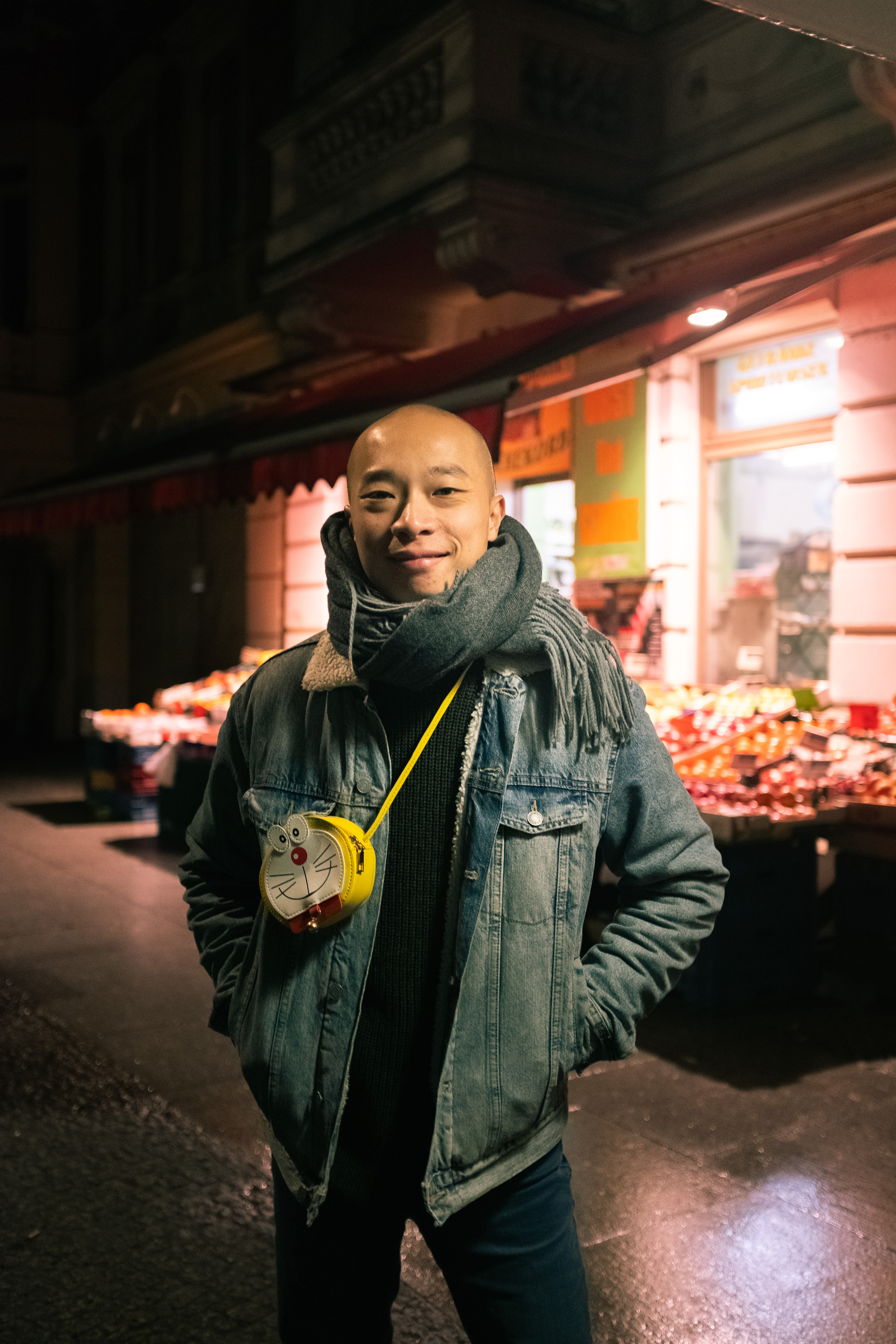
Cheong Kin Man
Some of your film works are intimately related to Macau and the Macanese diaspora. What caught your interest in the subject?
When I wrote the production proposal of “Pateo do Mungo”, I was studying the Portuguese language and culture for a year at the University of Coimbra with a scholarship from the Orient Foundation. This year was very important for me since it further sparked my interest in my own identity, seeing it through the stories of the former colonial officers and people from Macau who lived in Portugal.
I first met Dr. Jorge Rangel–President of the International Institute of Macau–at Palácio da Independência in Lisbon in early 2008 and I was very well received. Dr. Rangel was always very welcoming and supportive. I asked him for financial support for a documentary about the Macau people’s identity and to be the advisor of the film. Dr. Rangel asked immediately, “How much do you need?” Still today I am very thankful to him and to the Institute.
Using anthropology’s jargon, I would say the mix-blood Macanese community was a “domestic exoticism” for me back then. As I started to study Portuguese at the University of Macau, I was quickly fascinated by their culture, which at that time I also considered as mine. In 2007 I wrote a letter to Dr. Henrique de Senna Fernandes and his son Mr. Miguel de Senna Fernandes, in Macanese patois. That was more or less how everything began.
Between 2008 and 2009, I traveled to Canada, the US, and Brazil to interview the Macanese communities residing in these countries. I made a very amateur documentary out of hours of materials that I got, “Ou Mun Ian, Macaenses”. It was shown in a dozen of Portuguese cities between 2009 and 2010. I have also been showing it as an academic material in several German universities since then. But I am not able to show it in Macau–it is too amateur–as I am still hoping to revive the project and make a new art project out of it. A high officer of culture, who was also my teacher in a summer course when I was still a teenager, once told me on the phone some ten years ago, “It is boring and looks like an educational documentary.” (laughs)
Also read: Patuá: Macanese Creole Facing Extinction
Which of your works do you like the most and why?
I don’t really like any of my works. I can’t even bear to see them anymore. I think it happens a lot, not just to artists, but to many who aspire to a constant change of self. The older the works become, the harder it is to identify with them again. Of course, “A Useless Fiction” brought me to several renowned film festivals as well as to my Ph.D. opportunity. But today I see it more like a work by someone else rather than really mine, at least in a philosophical sense.
What are you currently working on?
As mentioned, I am working on a new experimental visual ethnography. A new experimental video of mine was shown in Paris and Poznań Art Week in Poland last year. I think I am continuing in the same direction.
How would you describe the film industry in Macau?
Again, I think I might be the wrong person to answer this question. Two years ago I was asked the same question by the New York Times Style Magazine. I said I am the wrong person and I then invited Albert Chu, Hong Heng Fai, Lou Ka Choi, and Tracy Choi to join me in the interview, which can be read here.
Although I cook, I would not say that I am a chef. It is in the same logic that I prefer not to call myself a filmmaker. It is still fine maybe with the English word “filmmaker” or German “Filmemacher,” while I would feel really bad with the French or Portuguese words “cinéaste” or “cineasta,” I refuse these words since I respect this profession very much.
But observing Macau and its film production scene as a visual anthropologist, I would say the efforts from both the Macau government and the filmmakers have paid back in these last years. I am not 100% sure if one can use this word “industry” in its very own sense in the Macau context, but I am very happy to see filmmaking is encouraged and welcomed in today’s Macau.
Back to the Macau question, one of my main concerns is self-censorship. Last year I wrote a critique for a German magazine on Macau’s cinema and its decolonization together with a German Sinologist and a good friend of mine, Charlotte Schmidt. I was very happy to see Albert Chu, Penny Lam, and Tracy Choi talking very freely with us. It seems optimistic and that Macau filmmakers are wise enough to maximize their creativity in the Macau context. Let’s observe it with our best attention.
How do you feel it could be improved?
Very personally, what I wish is that cinema in Macau can also be a powerful instrument of defending the freedom of expression. At the same time, as an occasional curator who brought Macau films, including my own, overseas over a decade, I think Macau still needs much more exposure in festivals of other countries. I hope Macau films can become better known in Europe for example.
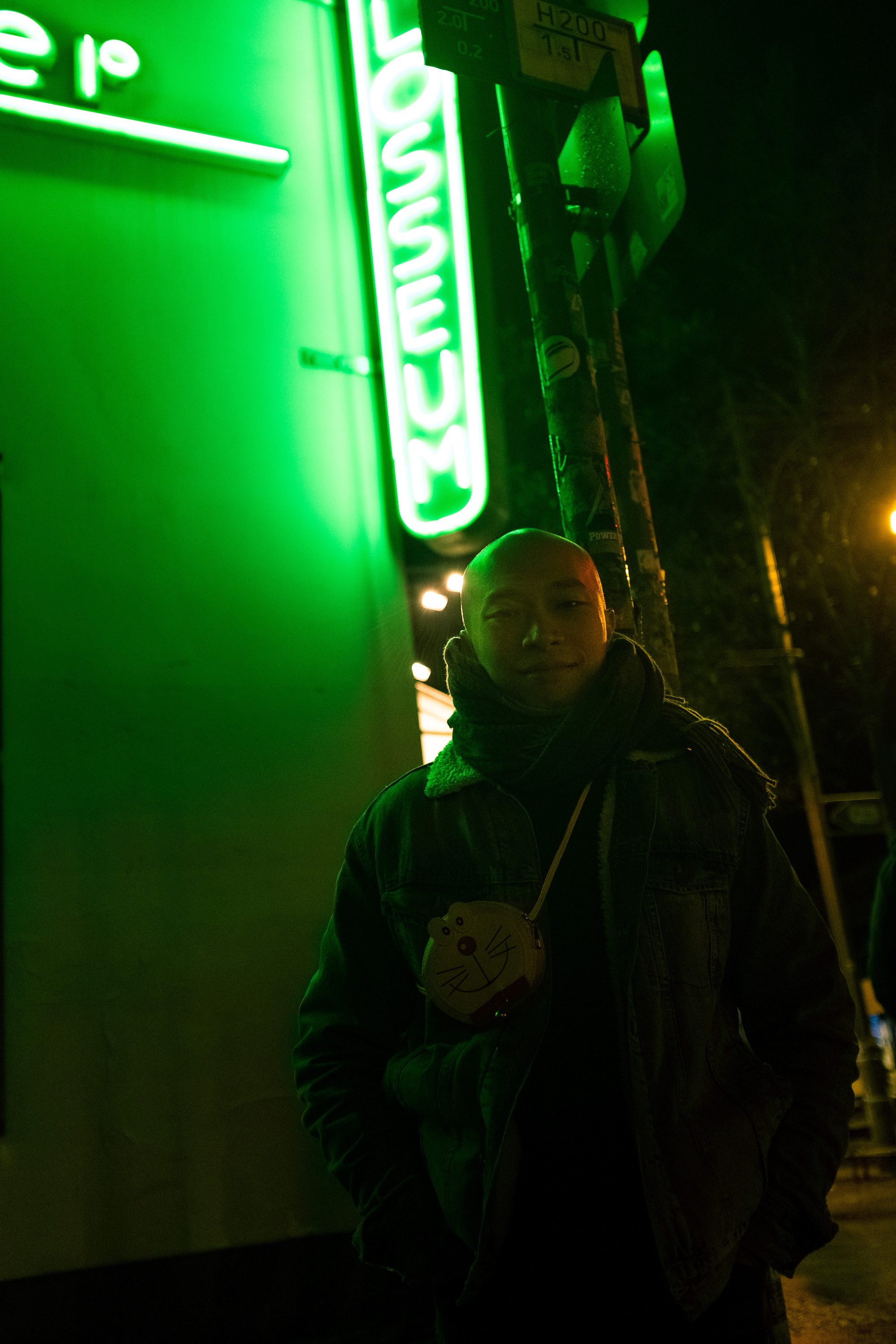
How was it growing up in Macau? What are some of your favorite memories?
I was born in 1987, the year when the Sino-Portuguese Joint Declaration was signed. My experience in Berlin, where the wall fell in 1989, reminds me constantly that Macau has been going through a process in which a renewed identity has been created. In 1999, although I was only 12, I was very much aware of the handover. I remember one day I climbed up the Guia Hill with my father and sister to see the Portuguese flag-lowering down during sunset.
In my own smaller context, I think I may say I was born in the middle of the ivory industry in Macau as it was in its golden era when I came to this world. My father, who swam to Macau illegally from mainland China in 1979, was then already a registered ivory crafter and met my mother in the mid-1980s in the same ivory factory.
Well, it is very hard to tell some “favorite” memories, since for me there is no “favorite” or “least favorite” memory. I think of the subtropical heat, which today is somewhat exotic for me. Or maybe I do have something to tell: in 2004, after our very last final exam in high school, I was finally “liberated”. Together with one of my best friends, Ho Io Pang–today a double bassist also living in Germany–we went secretly to the roof of the then abandoned Ching Peng Theatre, and also without permission, the roofs of Moorish Barracks and of Sir Robert Ho Tung Library. We even literally climbed, as there was no path to, until the highest point of the Green Island (Ilha Verde).
I miss very much eating on the street, biking from Taipa’s old town until the disappeared Jardim da Estrela, always discovering something new with my father–which fortunately I am still doing even though in distance–and more. I miss the Portuguese scouts singing while marching on the quiet and almost empty Rua de São Paulo in those days. I miss the Observatory, which was destroyed for the construction of today’s Macao Museum.
What are some of your favorite places in the city?
It is very hard to tell. I love many places. Maybe my humble apartment in Taipa on the 47th floor. When the weather is good, there, one can even see the Hong Kong side’s entrance of the Hongkong-Zhuhai-Macau Bridge. One can observe both jetfoils and typhoons coming back and leaving from Macau.
Which are your favorite dishes in Macau and where do you usually go to eat them?
Too many! I love the Cantonese soups that my mother makes with all kinds of ingredients that many European friends find exquisite. Also, I grew up in the neighborhood around Rotunda de Carlos da Maia (Three Lamps area), and thus, I knew how good the Burmese mohinga or ka-da-si-chat was, long before I first tasted a pastel de nata in Lisbon.
Also read: A Taste of Little Burma in Macau’s Three Lamps District

